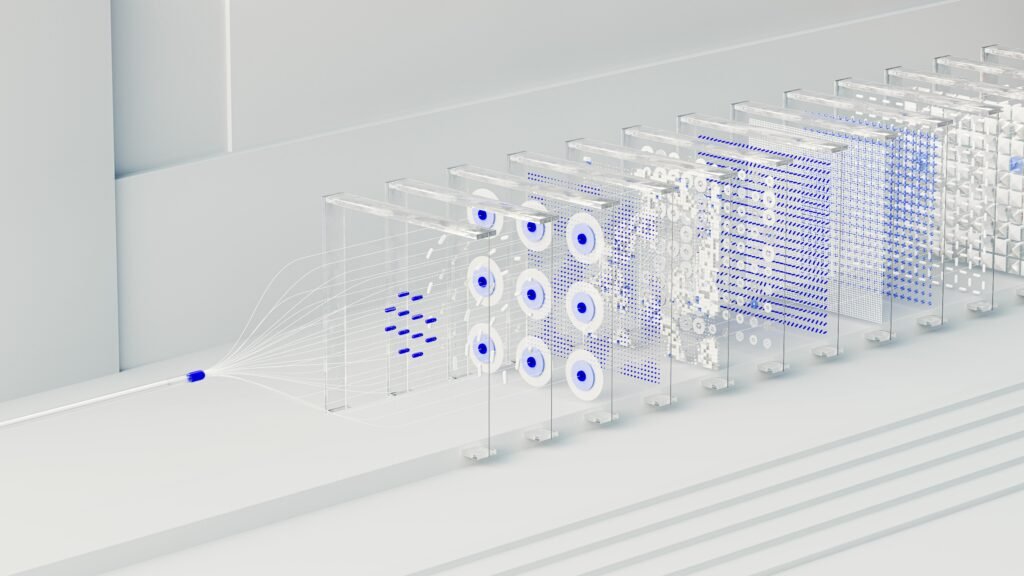🚀 Introduction: Machine Learning Algorithms to Know in 2025
As AI advances, knowing the top machine learning algorithms to know in 2025 becomes essential—whether you’re a beginner, student, or professional.
At AiBlogQuest.com, we break down 9 powerful ML algorithms that are shaping industries, powering your favorite apps, and driving innovation across fields like finance, healthcare, and marketing.
🧠 Top 9 Powerful Machine Learning Algorithms to Know in 2025
1️⃣ Linear Regression – Best for Predictive Analytics
Use Case: Forecasting sales, temperature, or stock prices
How it works: Finds the linear relationship between input (X) and output (Y)
2️⃣ Logistic Regression – Ideal for Binary Classification
Use Case: Spam detection, loan approval, disease diagnosis
It predicts probabilities and maps them into binary classes (yes/no).
3️⃣ Decision Trees – Human-Readable Logic-Based Models
Use Case: Customer segmentation, fraud detection
It splits data into branches based on decision rules—easy to visualize and explain.
4️⃣ Random Forest – Powerful Ensemble Model
Use Case: Credit scoring, risk assessment
A forest of decision trees that boosts accuracy and reduces overfitting.
5️⃣ Support Vector Machines (SVM) – Great for High-Dimensional Data
Use Case: Face recognition, handwriting classification
It separates classes with the widest margin using hyperplanes.
6️⃣ K-Nearest Neighbors (KNN) – Simple, Lazy Algorithm
Use Case: Recommendation engines, pattern recognition
It classifies based on the “k” closest data points (neighbors).
7️⃣ Naive Bayes – Fast and Probabilistic
Use Case: Sentiment analysis, spam filtering
Based on Bayes’ Theorem with strong independence assumptions.
8️⃣ K-Means Clustering – Unsupervised Learning Favorite
Use Case: Market segmentation, image compression
Groups data into “k” clusters based on similarity.
9️⃣ Gradient Boosting (XGBoost, LightGBM) – Best for Competition-Level Accuracy
Use Case: Kaggle competitions, structured data prediction
Builds models sequentially to reduce prediction errors.
🔗 Useful Links from AiBlogQuest.com
❓ FAQ: Machine Learning Algorithms to Know in 2025
Q1. Which machine learning algorithm is best for beginners?
Linear Regression is ideal to start with—easy to understand and implement.
Q2. Are these algorithms used in real apps?
Yes! Apps like Gmail, Spotify, and Amazon use a mix of these algorithms in recommendation systems, filters, and personalization.
Q3. What’s the difference between supervised and unsupervised algorithms?
Supervised algorithms learn from labeled data (e.g., Decision Trees), while unsupervised algorithms find patterns in unlabeled data (e.g., K-Means).
Q4. Is Python the best language to learn these algorithms?
Yes. Python has strong libraries like scikit-learn, TensorFlow, and XGBoost that support ML algorithm development.
Q5. Can I build projects using these without a PhD?
Absolutely! Many platforms like Kaggle, Google Colab, and Teachable Machine make it beginner-friendly.
🏁 Final Thoughts
Understanding the machine learning algorithms to know in 2025 gives you a competitive edge in tech, data science, and business. Whether you’re analyzing trends or building smart systems, these algorithms are your foundation.
🧠 Keep exploring machine learning with real-world examples and tutorials at AiBlogQuest.com—your AI education hub.
🏷️ Tags:
machine learning algorithms to know in 2025, ml algorithms, ai models 2025, supervised learning, unsupervised learning, aiblogquest



